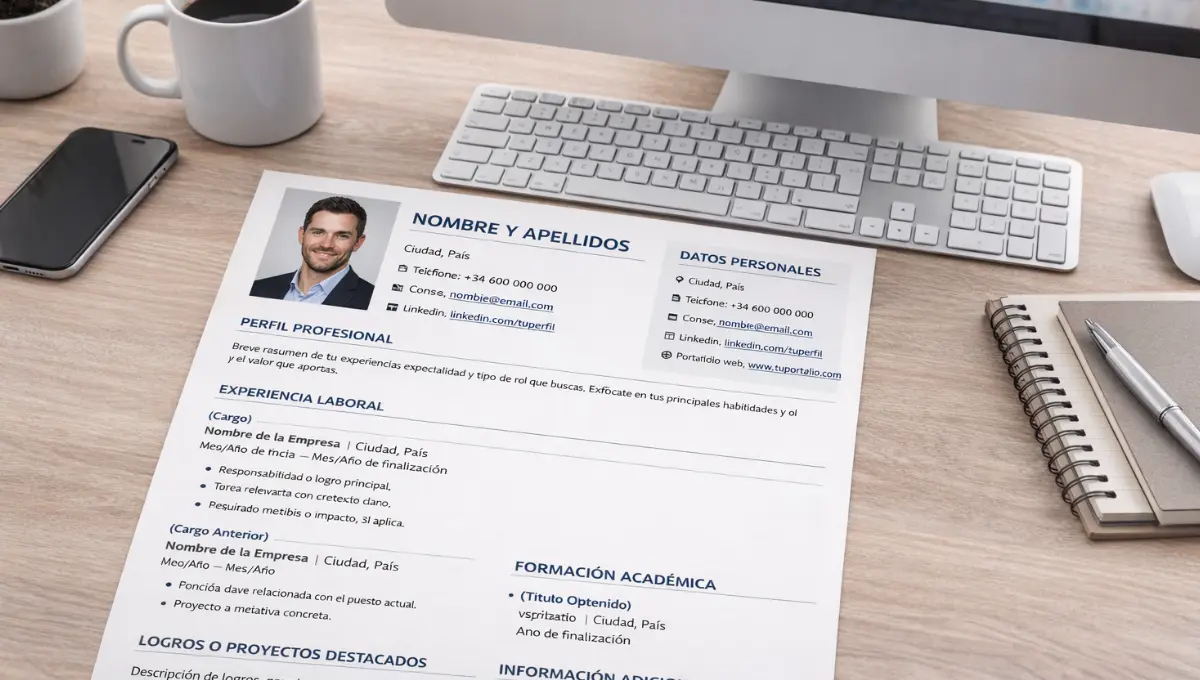Writing a letter in Spanish can be extremely useful in certain situations, in addition to bringing back memories of the good old days before the internet. Indeed, even if you aren’t going to sit down with a quill and a bottle of ink to write a long-winded letter on parchment paper, there are numerous situations in which a formal or informal letter would increase your chances of getting your message across.
There are numerous types of letters that you can write in Spanish, ranging from love letters to letters of complaint, each with its purpose. As a result, each letter requires slightly different terminologies and, in some cases, formats.
In this article, we’ll review several letters in Spanish to help you find the right kind of letter to suit the occasion.
How to write a letter in Spanish?
If you think writing a letter is a thing of the past, you may be surprised. You have probably not considered writing a letter in a long time because you are already very familiar with the English letter format. However, writing a letter in Spanish is a little different because you must learn different formatting guidelines, letter etiquette, and some new vocabulary.
Learning how to write a letter in Spanish can help you do the following, even in 2023:
- Sending a business letter can help you make a good first impression with your clients and build long-term relationships.
- Although email etiquette differs from physical letters, an email’s body closely resembles a traditional letter’s structure.
- Nothing will ensure your voice is heard more than submitting a formal written letter to headquarters.
Key letter writing vocabulary
| Spanish | English | Example sentence | English |
| Tamaño carta | Letter size (A4) | Recuerda imprimir tu CV en una hoja tamaño carta. | Remember to print your resume on letter-size paper. |
| Tamaño oficio | Legal size | Solo utilizamos hojas tamaño oficio para este tipo de proyectos. | We only use legal-size paper for these types of projects. |
| Sobre | Envelope | Ya escribí mi carta, pero necesito un sobre para enviarla. | I already wrote my letter, but I need an envelope to mail it. |
| Estampillas / postales | Stamps | La tienda de conveniencia de la esquina vende estampillas. | The convenience store in the corner sells stamps. |
| Membrete / hoja membretada | Letterhead | Esta carta es muy formal, tiene membrete y todo. | This letter is very formal, it’s got a letterhead and everything. |
| Correo electrónico | ¿Por qué no mejor envías tu carta por correo electrónico? | Why don’t you send your letter by email instead? | |
| Correo postal | Postal service | Los envíos por correo postal son seguros pero bastante lentos. | Mail sent by the postal service is very safe but also very slow. |
| Oficina postal | Post office | La oficina postal debe de tener sobres y estampillas. | The post office should have envelopes and stamps. |
| Remitente | Sender | La dirección escrita en la parte inferior del sobre es la del remitente. | The address written in the lower part of the envelope is the sender’s. |
| Destinatario | Receiver | Lo más importante es asegurarte que la dirección del destinatario esté bien escrita. | The most important part is making sure that the address of the receiver is written correctly. |
| Dirección | Address | ¿A qué dirección le enviamos su paquete? | What address should we mail your package to? |
| Código postal | Zip code | Tengo su dirección, pero no me sé el código postal. | I have his address, but I don’t know his zip code. |
| Enviar | To send | Necesito tu dirección, te voy a enviar un paquete. | I need your address, I’m going to send you a package. |
| Recibir | To receive | No he recibido ninguna carta en los últimos dos meses. | I haven’t received any letters in the past two months. |
| Entregar | To deliver | El cartero pasa a entregar todas las mañanas. | The mailman delivers the mail every morning. |
| Firma | Signature | No entregaron mi paquete porque no estaba en casa y necesitaba una firma. | They couldn’t deliver my package because I wasn’t home and they needed a signature. |
| Apartado postal | PO box | Estoy considerando contratar un apartado postal para encargarse de todas mis cartas. | I’m considering hiring a PO box to manage all of my letters. |
| Postperson | Cartero/cartera | El cartero me ayudó a asegurarme de que la dirección estuviera bien escrita. | The mailman helped me ensure that the address was written correctly. |
| Correo certificado | Certified mail | Su diploma universitario llegará por correo certificado dentro de los próximos siete días. | Your university degree will be delivered by certified mail within seven days. |
| Correo basura | Junk mail | Necesito ayuda para categorizar todo el correo basura que recibo en mi apartado postal. | I need help categorizing all the junk mail I receive in my PO box. |
There are several business Spanish courses that can help you expand Spanish business vocabulary, business writing and communication.
Formatting a letter in Spanish
Letterhead: The letterhead should appear first on your letter, in the upper left corner. Your letterhead should include the company name, address, phone number, logo, and website, if applicable.
Date: The date should appear one space after the letterhead, aligned to the right.
Receiver’s address: The receiver’s address should be one space after the date, aligned to the left.
Greetings: Follow the address and align to the left.
Body: The body of the letter is by far the most adaptable component. It should come after the greeting and be formatted like normal prose.
Sign-off: The sign-off varies depending on the relationship between the sender and the receiver. We’ve included some formal and informal sign-offs below. It should be aligned to the left and slightly indented.
Signature: The signature should be at the end of the letter. It can contain your name and signature, or only one of the two. It should be aligned on the right.

How to write a formal or business letter in Spanish
Starting a formal letter with a strong business greetings in Spanish is one of the most effective ways to make a good first impression. This alone can help you stand out from the crowd if you want to win big by doing business in Spanish. It is worth noting that Spanish greetings are followed by a colon, whereas English greetings are followed by a comma. Here are some examples to demonstrate what we mean.
| Spanish | English | Notes |
| Estimado: / Estimada: | Dear Sir, / Dear Madam, | Used when adding the name of the receiver is unnecessary. |
| Estimado señor _____: / Estimada señora _____: | Dear Mister _____, / Dear Mrs. _____ | Used when you want to address the receiver by name. |
| Estimados colegas: | Dear colleagues, | Used when addressing multiple people at the same time. Note that colleagues implies that you’re at the same level, so don’t use it with superiors. |
| A quien corresponda: | To whom it may concern, | Used when the receiver is unknown. |
| A quien le pueda interesar: | To whom it may concern, | Used when the receiver is unknown. |
| Al área de _____: | To the department of _____, | Used when addressing an entire department or when you don’t know which person in a specific department will respond to you. |
| Reciba usted un saludo cordial | Please receive a warm welcome | Use this immediately after the initial greeting to be extra polite. |
| Espero que esta carta le encuentre bien | I hope this letter finds you well | Use this immediately after the initial greeting to be extra polite. |
| Espero que se encuentre en buena salud | I hope this letter finds you in good health | Use this immediately after the initial greeting to be extra polite. |
Letter of inquiry
A letter of inquiry, known in Spanish as la carta de consulta, is a very versatile business document that can help figure out a number of issues. Generally used with other businesses, this type of letter can help you ask direct questions or follow up on past requests. Here are a few examples:
| Spanish | English | Notes |
| Le escribo para preguntar acerca de _____. | I’m writing to inquire in regards to _____. | Can be used to ask any type of question. |
| Por medio de la presente, me comunico para solicitar información sobre _____. | Through this means, I am communicating to request information regarding _____. | Formal request for information. |
| Me comunico para hacer la petición oficial para _____. | I’m communicating to make an official petition for _____. | Formal petition request. |
| Solicita: _____. | Request: _____. | Direct way to make a request. |
| Suplica: _____. | Plea: _____. | Direct way to make an urgent request. |
How to sign off or end a formal letter in Spanish
| Spanish | English | Notes |
| Le agradezco de antemano por su atención. | Thank you in advance for your attention, | Most formal. |
| Atentamente, | Attentively, | |
| Cordialmente, | Cordially, | |
| Saludos cordiales, | Cordial greetings, | |
| Sin otro particular, les saluda atentamente, | Without any other points, you’re greeted attentively by | Most formal. |
| En espera de su respuesta, le saluda atentamente, | Awaiting for your answer, you’re greeted attentively by | Most formal. |
| Con sus mejores deseos, se despide atentamente, | With their best wishes, you’re bid farewell attentively by | Most formal. |
| Quedo a su disposición, | I remain at your disposal, | |
| Quedo a la espera de su respuesta, | I await for your response, | |
| Con mis mejores deseos, | With my best wishes, | |
| Reciba un cordial saludo, | Receive a cordial greeting, | Most formal. |
| Respetuosamente, | Respectfully, |

If you want to learn Spanish online, we recommend you explore italki to find the best online Spanish tutor. The tutors at italki are mostly native speakers with years of experience.
Learn Spanish with italki
This online language-learning platform is ideal for becoming a fluent Spanish speaker. There are several reasons why italki is unique. Some primary reasons include:
Tailored lesson plans: Learning Spanish online is much easier when you have lesson plans tailored to your specific learning objectives and requirements. italki provides personalized learning sessions to help you learn Spanish online. These sessions will help you determine your learning objectives and goals.
Experienced Spanish tutors: italki’s tutors are mostly native speakers. You can select a private Spanish tutor online from a list of experienced and professional instructors based on your preferred learning schedule and budget. These teachers will design personalized learning plans based on your specific requirements.

Find Your Perfect Teacher
At italki, you can find your Spanish tutor from all qualified and experienced teachers. Now experience the excellent language learning journey!
Book a trial lesson
Schedule flexibility: There’s nothing more convenient than learning Spanish at your own pace and time. This one-of-a-kind platform understands people’s hectic schedules and aims for maximum flexibility.
Interactive learning mode: italki’s interactive learning methods ensure that you are fully engaged with your Spanish tutor. The conversational learning style enhances the engagement and enjoyment of learning. You can choose the best learning format based on your objectives and goals.

How do I book lessons at italki?
Visit italki. Fill out your profile with all of the required information. To find a Spanish teacher, select the ‘Find a teacher’ option and use the filter for Spanish teachers. Choose a teacher who fits your learning objectives and requirements well. Schedule your lessons.
You are strongly advised to adhere to your Spanish tutor’s extra material, exercises, and scenario-based content. Accept constructive criticism and work to strengthen your weak points.
Frequently asked questions
Are there regional variations in Spanish letter greetings?
Yes, there can be variations based on regional customs and preferences. It’s advisable to be aware of the specific cultural nuances in the Spanish-speaking region you are addressing.
Can I use English greetings in a Spanish letter?
While possible, Spanish greetings are recommended for a more culturally appropriate and respectful tone. It also shows an effort to communicate in the recipient’s language.
Are there gender-specific considerations in Spanish letter greetings?
Yes, Spanish greetings often vary based on the gender of the recipient. For example, “Estimado” is used for males, and “Estimada” for females in formal settings.
Conclusion
While writing a letter in Spanish, remember the essential techniques and greetings mentioned throughout this guide. We also recommend you use different Spanish learning apps to boost your Spanish speaking and writing skills.
Moreover, explore italki to get the best Spanish tutor online. You can book your lessons through the website. Discuss learning goals with the preferred teacher and reach the desired learning outcome quickly.
Want to learn a language at italki?
Here are the best resources for you!



















